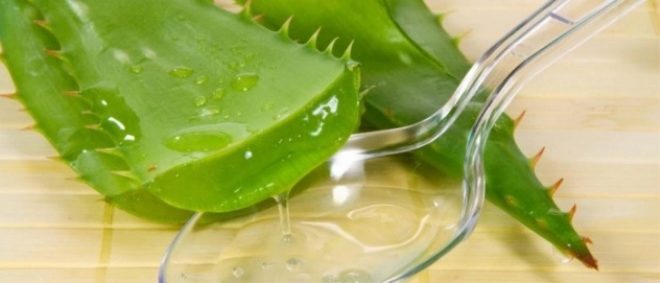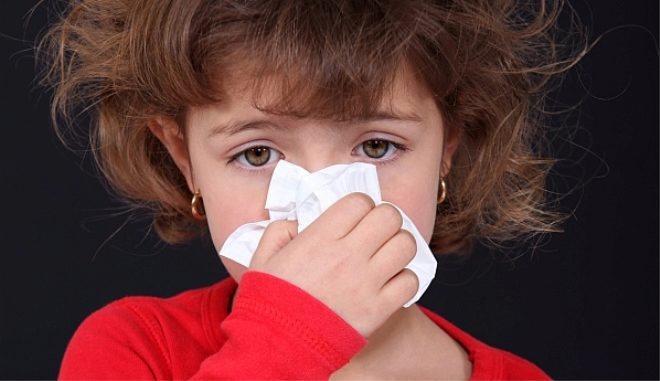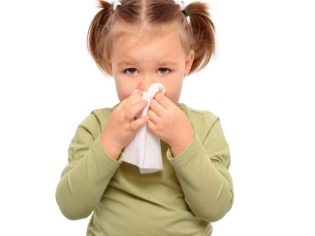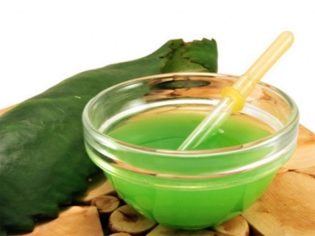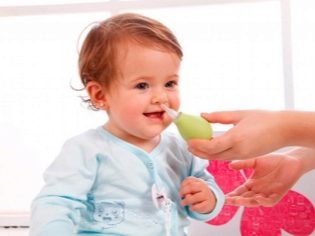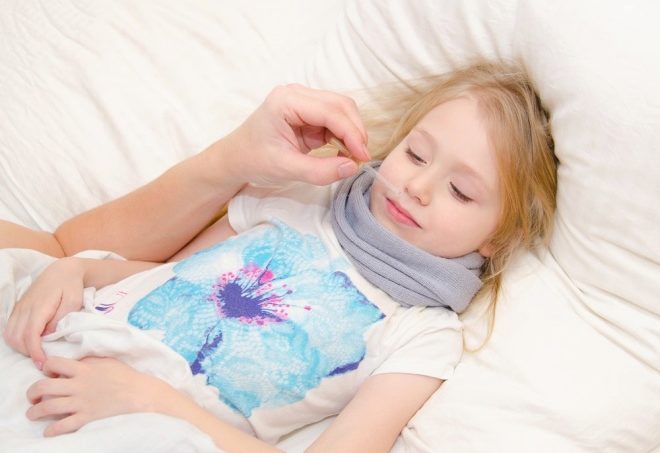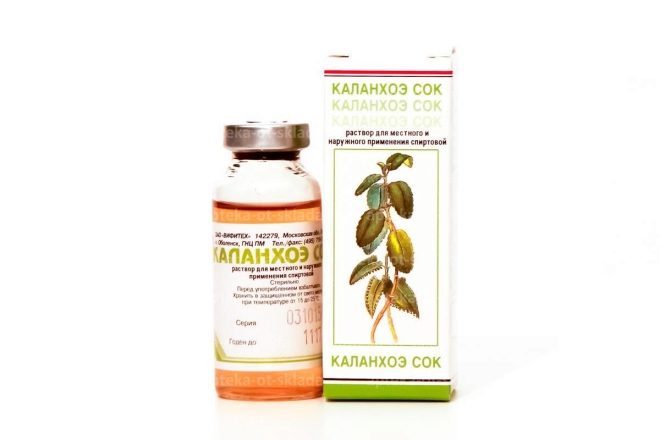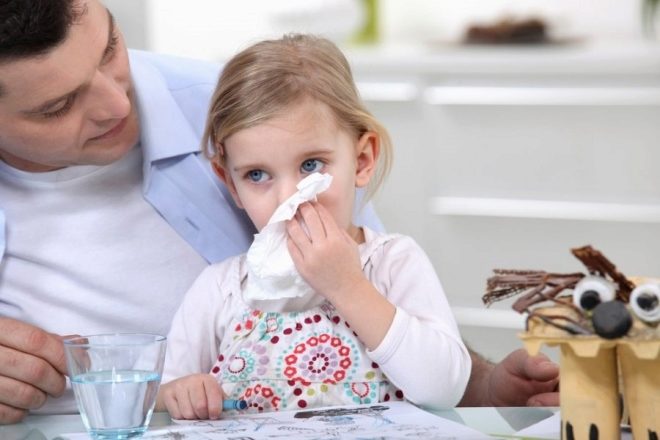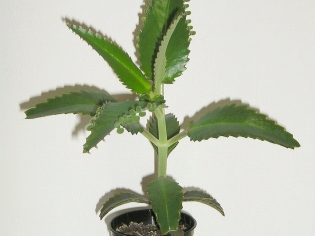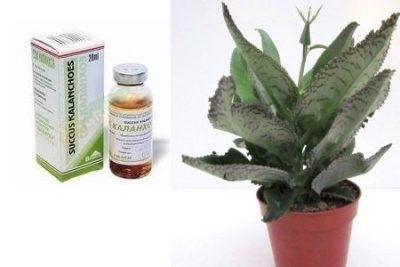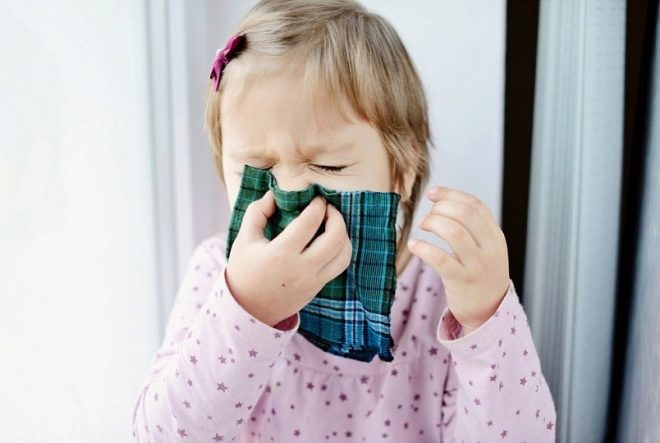Should I use Kalanchoe juice in the treatment of rhinitis in children?
Much has been said and written about Kalanchoe in the nose. It is known that the juice from the fleshy leaves of this houseplant helps with a cold, but the controversy does not subside about the children's use of such drops. Some people say that this is an excellent tool even for infants, others are sure that children should not drip Kalanchoe juice at all, because its use in rhinitis is only to eliminate the symptoms, it does not heal, but Its effect on children is truly unpredictable. Let's try to weigh the pros and cons.
Plant properties
By Kalanchoe botany include about two hundred different plants, united by this species. In Russia, two grow on the windowsill - Kalmarchoe Degremona and Cirrus Calanchoe. Therefore, speaking of the juice of this plant, we will bear in mind both of these varieties of an evergreen plant with juicy and fleshy leaves. Moreover, the differences between them are only external, and even then minor. Their basic properties are the same.
Kalanchoe juice has antimicrobial action, anti-inflammatory and hemostatic effect. He removes puffiness. When instilled into the nose behaves as a irritant.
The recipe for using kalanchoe for children from a cold can be seen in the next video.
Operating principle
No miraculous therapeutic effect in the treatment of rhinitis from the juice Kalanchoe should not wait. It is practically not, except for a small antimicrobial effect. But local irritation, which it causes after getting into the nasal passages, provokes such a protective mechanism as sneezing. The patient sneezes and coughs long and hard, due to which the mucus almost forcibly leaves the nose and nasopharynx, breathing is restored. However, only temporarily.
Is it possible for children?
In principle, it is possible. Some pediatricians even take the liberty to prescribe juice to their young patients, although they are well aware that the result is unpredictable, it can unpleasantly surprise everyone.
First, Kalanchoe juice can cause allergies in a child with a weakened immune system.
Secondly, it increases the risk of secondary edema and the appearance of complications of rhinitis.
And as is clear from the principle of action, intense sneezing, although it helps to release the nasal cavity from snot, can cause injuries to the nasopharynx, and too small a child can even choke on mucus, since it does not know how to blow out.
That is why you can use Kalanchoe juice, but with extreme caution. Despite the numerous reviews of moms on the Internet, you should not risk and drip this tool to infants and children up to a year. Older children, it is desirable to dilute the juice with water or saline, and also to comply with the dosage.
How to cook
If this unpretentious plant grows in your home on the windowsill, there will be no problems with the raw materials for preparing the preparation. Choose the most juicy sheet, cut it, squeeze through gauze. Dilute juice with water (one to three) and drip into each nasal passage. Some popular recipes recommend before pressing a cut sheet for several hours in the refrigerator.
If you do not have Kalanchoe at home, you can buy a finished product at a pharmacy that contains such juice.
Choosing a pharmacy option, remember that children should not bury alcoholic juice, a product with the addition of ethyl alcohol is contraindicated in children.
In addition, avoid homeopathic medicines that contain this plant. There, as well as all the other components, it is contained in so negligibly small micro doses that there will be no sense from such treatment.
Sometimes for children prepare a decoction of the leaves of the plant, it is a milder tool.
Instructions: use for children
Kalanchoe juice should be considered as a measure of emergency care for a child only on the condition that his nose does not breathe at all, and there is no way to blow his nose properly. From such an unconventional method of treatment of rhinitis should be abandoned if:
- If a child has an allergic rhinitis. In this case, treatment of the cause, and not the elimination of the effect, is required.
- If the child has a severe bacterial cold. In this case, the mucus will have a green or gray color. This condition requires early antibiotic therapy. Delay can cause complications.
- If a child has sinusitis with purulent discharge from the nose.
- If the child has injuries of the nasal septum or curvature resulting from previous sinusitis.
Before first use, parents need to conduct a home allergy test. To do this, apply a drop of concentrated (undiluted) juice to the child on the nasolabial triangle (into the dimple above the upper lip), lightly rub and evaluate the result after an hour and a half. If there is no redness, swelling, Kalanchoe juice can be used. If even a slight reaction is manifested, it is absolutely impossible to use this tool for this child.
You can drip Kalanchoe juice no more than 2 times a day, no more than five days. So say folk healers. More skeptical specialists in the field of traditional medicine speak of the juice of this plant as a means of single use, for isolated cases, considering the course treatment of Kalanchoe to be unjustified.
Contraindications
An unequivocal ban on the use of Kalanchoe juice is an increased body temperature during a runny nose. If it is above 37 ° in a child, this indicates that nasal congestion and slight swelling are a clear sign that inflammation is occurring in the nasal passages. Not the worst, by the way, since during it pathogens are destroyed.
If anti-inflammatory drugs of Kalanchoe juice are used at this stage, the inflammation will be “extinguished” too soon, and the path for harmful microbes will be clear.
Thus, the sap of the plant should not be used at the beginning of the disease, better to use it at the end of the affliction, when everything is over and it remains only to get rid of excess mucus in the nose.
You can not drip Kalanchoe too long, as this herbal remedy dries mucous. This can significantly complicate the treatment of rhinitis. Often, children add aloe juice to another Kalanchoe juice; this makes it possible to make such drops more gentle and reduce the likelihood of drying the respiratory mucosa.
In any case, before using this herbal medicine for the treatment of a child, it is necessary to consult a doctor. I repeat once again: Kalanchoe juice is not harmless and safe, independent experiments in this situation are inappropriate and even criminal.
The recipe drops for children with Kalanchoe on the basis of saline, you can see in the next video.



